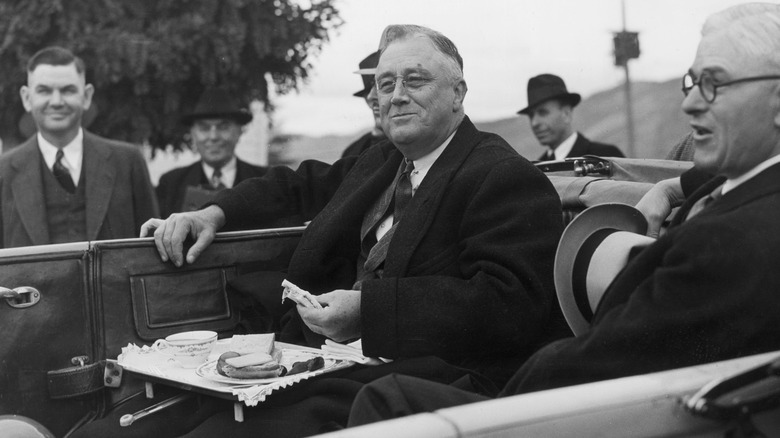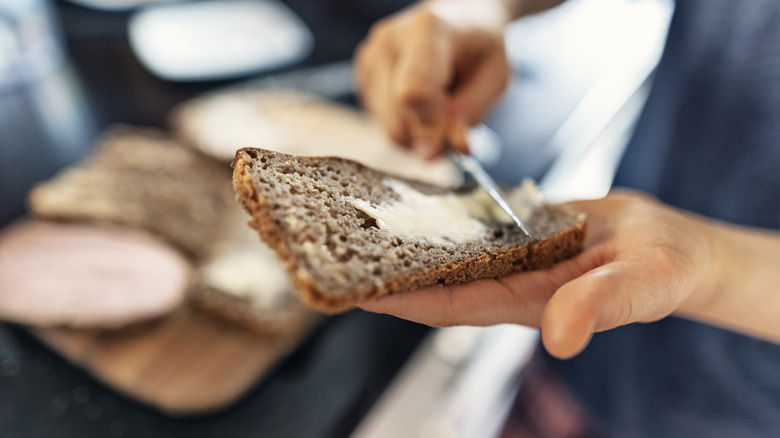Bread And Butter Was A Regular White House Lunch During The Great Depression
President Franklin Delano Roosevelt is a historical figure who needs little introduction. As the man that led the United States through two of the greatest political and economical storms the country has ever had to weather, the Great Depression and World War II, he's a certifiable icon. So it may come as a surprise that this great man of American history didn't exactly eat great food.
In fact, Roosevelt's White House kitchen had an infamous culinary reputation. Spaghetti with boiled carrots, jellied salads, deviled eggs with tomato sauce, cold mutton, prune pudding; these were just a few of the less-than-appetizing meals one could expect to find on the menu. There was even experimental fare like Milkorno, a supplement made from dried skim milk and cornmeal, that intrepid cooks could turn into Milkorno Tamale Loaf, Milkorno Chili, and Gnocchi di Milkorno. One particular dish was a common sight at the Roosevelts' dinner table: the blandly simple bread and butter sandwich. It's a bizarre fact of history that a culinary combo that modern eaters associate with pre-dinner service was once the meal du jour for the most powerful man in America.
Who would dare to serve this unpalatable fare to the president? The First Lady, Eleanor Roosevelt, of course.
A menu of solidarity during the Great Depression
The First Lady had a noble cause in mind when crafting this humble White House fare. With an eye on the many Americans forced to join bread lines and soup kitchens to avoid starvation, Eleanor Roosevelt set out to make meals that reflected the common struggle to incorporate protein on a budget. With the help of the White House housekeeper Henrietta Nesbitt, the First Lady began striving for a menu of 7-cent meals.
Production of each meal was strictly governed by both budget and nutritional value, which explains why a bread and butter sandwich fit the bill so nicely. Today, a bread and butter sandwich doesn't sound so meager, especially if you have artisan sourdough bread and high-quality butter on hand. But it's not exactly a meal you'd serve to an important person, like a visiting dignitary. Yet that's exactly what the First Lady did; if it was good enough for the people of America, it was good enough for global leaders.
When the time for food rationing came during World War II, the First Lady was again the first to lead the charge, planting a victory garden at the White House and approving the housekeeper's more inventive (if borderline inedible) dishes like eggs stuffed with meat scraps. For the Roosevelt White House, food was just one way to show solidarity with the average American.

